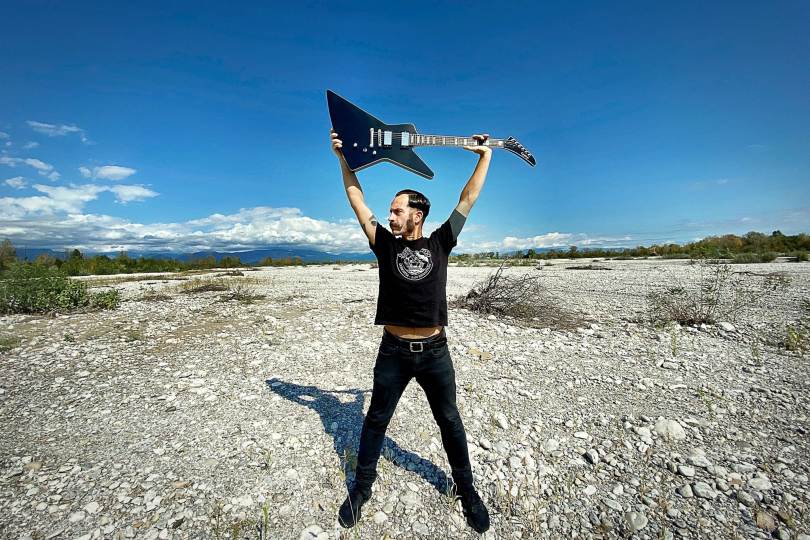
Xabier Iriondo: The Art of Inventing and (Re) Inventing Oneself
Xabier Iriondo is one of the most eclectic and captivating artists of our day. His countless collaborations and projects, both national and international, include his contribution as a guitarist in the Italian band Afterhours, in the thunderous Buñuel, and as a participant in the project of Damo Suzuki, a Japanese singer and guitarist who played in the famous krautrock group Can. Xabier is also an amazing multi-instrumentalist and has two solo albums to his credit. The first, Irrintzi, from 2012, is the manifesto of his musical research and tells us about his approach to experimentation with genres and sounds. His latest album, Tierra, released in 2020.
We met on a video call in the early morning—he is an early riser, as he himself declares, "the morning has gold in his mouth"—and he spoke to me from his studio in Milan.
I will now ask you some questions a little, let's say, personal, and also about your childhood.
X: I believe that to have a profile that really concerns a subject, not just an artist in general, one must also tell something about the subject beyond his professional activity, because this explains a few things.
Ok, so I would start with the fact that your roots are quite mixed because you come from a Basque father and an Italian mother. Do these roots somehow, coming from different parents of different nationalities, influence your creative process, and your musical approach?
X: In my case, it was quite important, not only for my artistic experience but also for my life. I still have part of my family there, linked to my father. My father was from '21, he was present at the bombing of Guernica in '37. He was a Basque pelota player which is the national sport of the Basque Country and has toured a bit all over the world. In the early 1950s he arrived in Italy, in Milan, he met my mother and then, in short, they started a family. My mother was born in Milan, but she has Parma, Neapolitan and Apulian origins; therefore, I am really a mix of many cultures and many ways of being. As regards the artistic question, in the long journeys we made by car, to go from Milan to Ondarroa—this is the name of the country where my father was born, it is a small town on the Atlantic coast of whalers and fishermen—we used to listen to Carlos Gardel and the Argentine tangos, but also traditional Basque music. And on the other hand, we listened to the musical passions of my mother, which were not only Italian music, such as Mina, but also French music, like Jacques Brel and Aznavour.
But at the same time, I had an education linked to rock, because I had a brother who was 13 years older than me and who trained me in this matter. At my house, I had a portable 45 rpm record player, and I carried it around the house when I was six or seven. And the records that were running were the 45s of Elvis Presley or The Beatles. When I started to have my turntable in my bedroom, then I listened to the records that my brother had, Led Zeppelin, Deep Purple and The Clash. But in particular, Bruce Springsteen who is, let's say, still now, one of my favourite artists ever. And he is also the live performer who first marked me in my adolescent phase—when I was 14 when he did his first concert in Italy. That thing struck me enormously. And that feeling stayed with me a lot. Another influence I had in my youth was Basque radical rock and it was the experience linked to the development and birth of the punk movement and the Do It Yourself in the Basque Country.

And how did your first approach to musical instruments happen?
X: Shortly thereafter, when I was 17, I decided to take up my first instrument, the electric guitar. There was no classical acoustic guitar, and there were no lessons. It was buying an electric guitar, a small amplifier and a week later, knowing only the chords of the C loop, doing my first concert in a small theatre.
Have your influences changed with those of today?
X: My path as a musician and listener has been diversified in these 35 years. I was lucky enough to see live the Screaming Trees, Nirvana and Pearl Jam; in short, all the first bands that gave birth to their genres and at their dawn, hence I got to see them in small clubs. There was also a very important reference venue for me, Bloom in Mezzago (a small municipality located about 30 kilometres northeast of Milan, Ed.), where I saw many live bands. But then, I wanted to dig back over the years, the 80s, English post-punk, American post-punk and American hardcore. I went deep also into German Rock or Krautrock in Europe, and ultimately the 60s and early 70s, like Beefheart, Zappa and the Silver Apples.
Therefore, listening to great traditional imported classics, with the influence of the German kraut, a fruitful combination…
X: Through the studies that Holger Czukay, the bass player of Can, did with Stockhausen, I approached contemporary music when I was only 21 years old, and I started to deepen with contemporary classical music. So, on the one hand; rock, the fury, the noise, the urgency. On the other, the bases that formed all this kind of music. And then I dug a little back to understand the twentieth century and what had happened to me. Despite not having had any lessons or notions—I can't read and I can't write music—it intrigued me.
And what about experimental compositions?
X: Ligeti, Penderecki, Cage, and all the minimalists, Steve Reich, Terry Riley. In short, I had dived headlong into these things in my twenties and therefore I was a devourer of many different musics, but also of so much tradition. Having also trained with American rock and roll, I went a little bit deeper. And therefore, not only the greats like Elvis Presley, Chuck Berry, Little Richard, Jerry Lee Lewis and Duane Eddy, but also the darker characters of the birth of rock and roll in the '50s.
So today do you feel connected, as a listener and a musician, to the previous musical traditions? Or have you also developed an interest in music closer to our time?
X: I keep myself a little bit abreast of what is happening and what new generations are listening to. Because a classic gap between artists or musicians is not knowing what the new generations are listening to.
To cite some examples?
X: Among them are Timo Ellis of the Netherlands, a Brooklyn-based artist and producer. I really like his sound and his production, and I like him as a guitarist. Another artist I've loved in recent years is called Kirin J. Callinan. He is a true outsider, an Australian guy who does everything: from pop to dance to rock. He doesn't give a damn. He is truly a free artist.
What is your most unexpected musical passion?
X: About twenty years ago, I started with my travels for work (and not only) to collect 78s around the world. And from there a strong, great and deep passion was born for the music of other eras. I have a large collection of Gardel's original Argentine tangos. I have a collection of 78s of music from all over the world and many things also from the Czech Republic and Czechoslovakia. I have recorded materials of Ainu music from 1910. And then I also became passionate about some labels and perhaps the most important of these is Dust to Digital, which I discovered in 2004 or 2005, and I started dealing with in an instrument and music shop that I had in Milan.
A question I really wanted to ask concerns precisely this, the fact that the music you make, or music in general, can be linked to geography, a story, or even an experience. Does music come from a place, from a historical fact, or from your personal experience?
X: The music I make comes from the sound and from the specific research I do in terms of timbre and sound. So, the music comes after this research. And that's why I have so many instruments, so many pedals and so many amps. I like to mix a lot of things and I'm always looking for unusual tones.
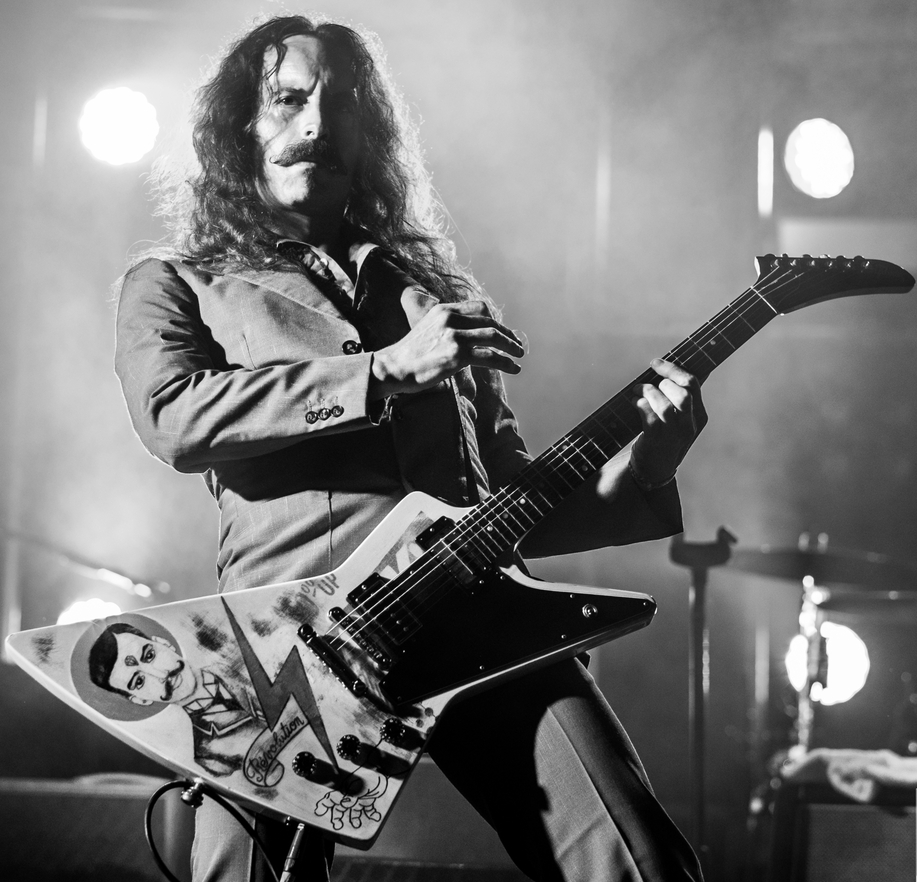
It seems that your path as an artist is more to dig, than to imitate or emulate?
X: I have never been a fan of cover songs, but I have tried in my path to overcome these limits. In fact, my very first solo album, Irrintzi, has one side of four original songs. And the other side is only made of covers, to try my hand at something that I had never done before. I also like to challenge myself a little and not to always wear, let’s say, comfortable slippers.
Talking about "not wearing comfortable slippers", if I'm not mistaken you have abandoned the guitar for a certain period, to devote yourself to the construction of your own instrument, the "Mahai Metak".
X: This happened in 2004/2005. At some point, I figured it might make more sense to do something ad hoc. And the occasion was the first tour I did with Damo Suzuki, the lead singer of Can. I was called by Olivier Manchion, who was the bassist of Ulan Bator and other bands. It would have been mainly improvisation and radical improv. So, I said yes, I went with the guitar. At that time, I also worked with a real-time processing software called Max MSP. And then I said to myself "I would like to go with something new too." One afternoon working with a piece of plywood, a saw some magnets I had, some guitar pickups taken apart, etc. I built myself a chordophone.
What was the result of this invention?
X: I took it on tour and so it was fun because the first thing for me is to amaze myself every time, to do different things. The principle of amazement during improvisation, it's interesting to me. Upon returning from the tour, I thought of developing a slightly more professional instrument. So, I copied the shape of a National New York from ‘32. I made it smaller, and at the same time more portable. I drilled it all and it was done with the help of a friend luthier with a numerical control machine.
Really cool. Is it a one-of-a-kind piece?
X: I made ten. Then I kept two of them, while I sold in my shop the other eight.
What method did you apply in playing this instrument?
X: I didn't touch the electric guitar for a year, I imposed this rule on myself. And I found new paths and techniques. And certainly, Fred Frith had a strong influence. I had the DVD called Step across the border by Fred Frith, in which I saw him using a very primitive approach; he took wooden boards, then mounted them on magnets and played with them etc. That thing hit me, and I said wow! From there I took the idea, and that's what I still use at my solo concerts. In short, it is the same instrument that I built 15 years ago.
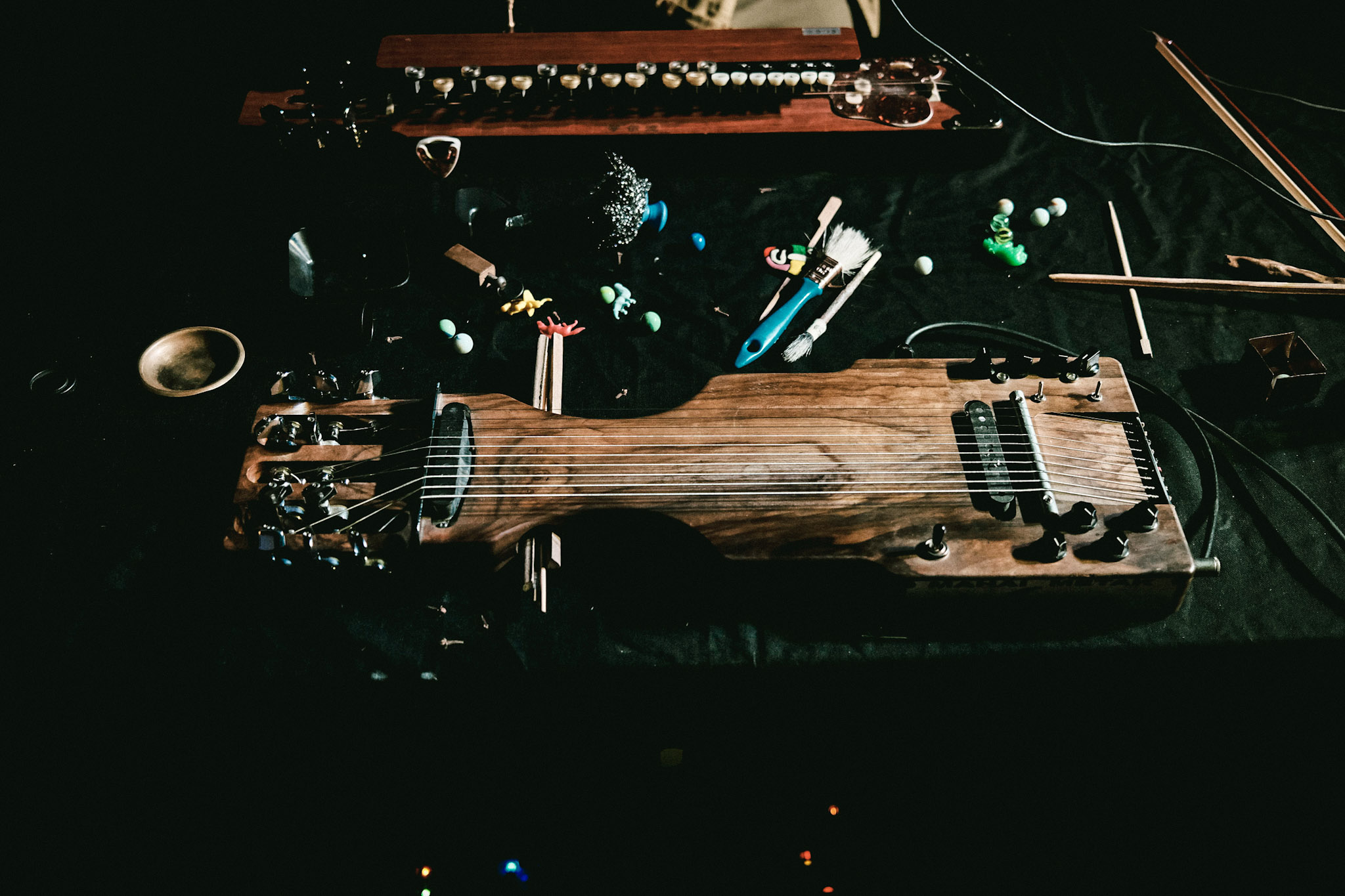
And what does "Mahai Metak" literally mean?
X: "Mahai" means table in Basque; "Metak" is a bale of hay, which I also use for Sound Metak, my music shop. For me it is a metaphor: the bales of hay were the artisanal way of storing the hay itself, that is the grass cut for the animals. With the mechanisation process, instead, the hay bales today are made by machines. And in the Basque Country, until 2007 and 2008, you could see these bales of hay everywhere. So, I took them as a model, as a kind of metaphor: keeping things, techniques or even inventing them, and then eventually transforming them back, in order to carry them forward in time and to be able to give them to others.
I wanted to ask you something about your most recent production, about your solo projects. Irrintzi was released in 2012, and your latest, Tierra, in 2020. They are both very high-level projects, but they are also very, very different compared to each other. How did this evolution happen?
X: Irrintzi lives by putting together what were the thoughts, the ideas of the previous four years. And I also said: ok, let’s bring some covers, let's get naked, let's tell who you are. And I put Bruce Springsteen, John Lennon, Battisti, Currà, "Itziar en Semea" (a song of the Basque tradition), Motörhead. On the other hand, I tried to figure out if I could put together folk music and not just traditional Basque stuff. In fact, the first song, "Elektraren Aurreskua", is a set of field recordings; Gaizka Sarasola plays tumtum and alboca, but played specifically out of tune. "Irrintzi" is an electric journey in the distortions, in the pedals. "Il Cielo Sfondato" is instead a path through the revisited folk tradition of the East, Asia, India, and so on. And so, here I used some Indian instruments and an electronic tabla. And then there is "Gernika Eta Bermeo", which closes the list of the original songs, which is my father's story of the experience in Guernica when the bombing took place. This is the first song I recorded with Mahai Metak, the very first ever. And I wanted it to be dedicated to my father, who died shortly before Irrintzi, to whom the record is dedicated.
So how did you come to Tierra's musical transformation?
X: Tierra represents my work on Mahai Metak, but also my work with Max MSP; I did the processing in real-time while I was playing it and therefore it is also imbued with ambient music. I used several techniques. At that time Franz Valente, drummer of Il Teatro degli Orrori and of Buñuel, a very dear friend of mine, was developing the Snare Drum Exorcism project. So, we decided together to do this split record. Franz and I will also perform in duo concerts in 2023.
And now? What is your future as a solo artist?
X: My solo album is almost ready, but I don’t know if it will come out and when it will come out. Without a shadow of a doubt, when I release this new album, I want to carry it around live, differently than what I had decided to do with Irrintzi, for which I did only one concert.
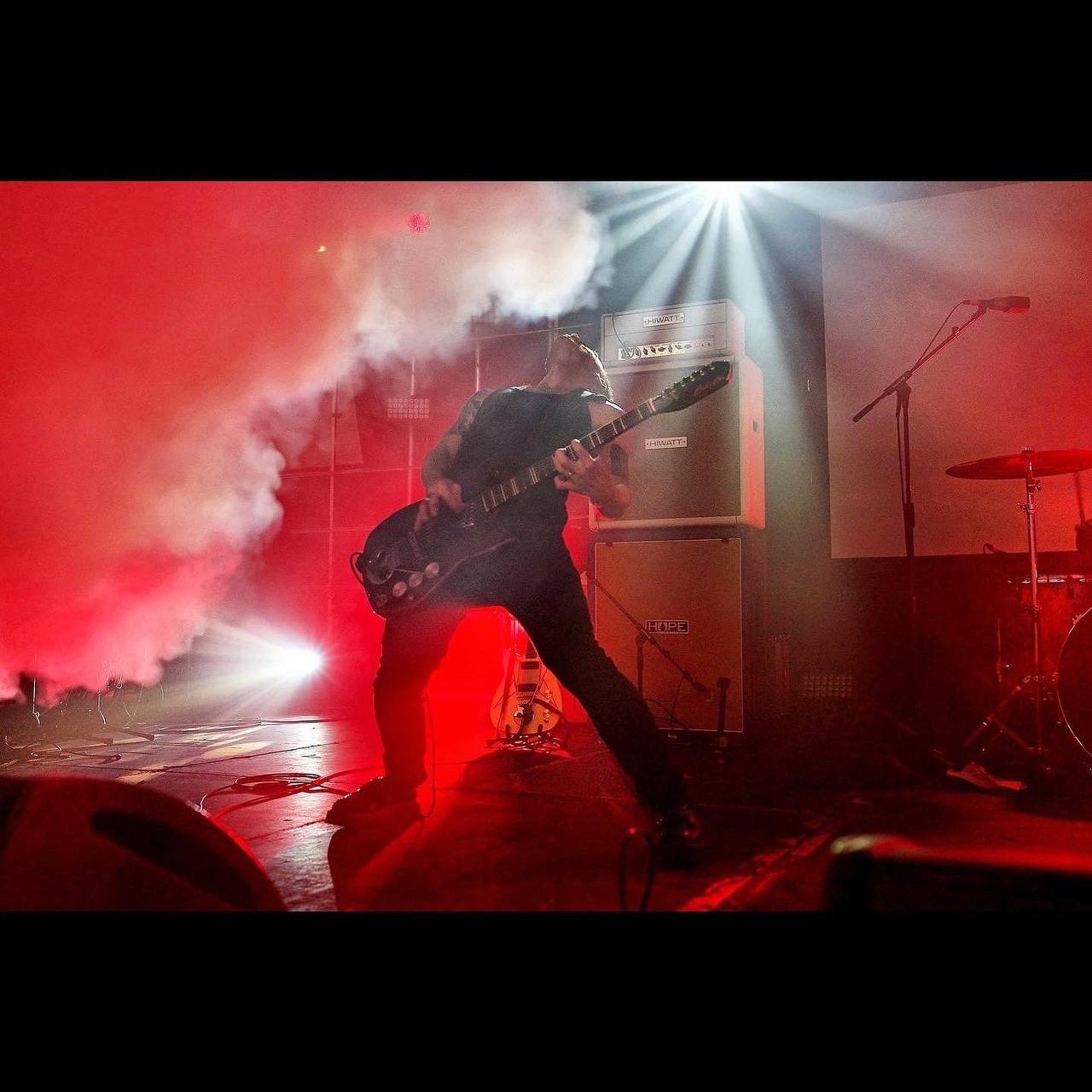
Let's say that your path, so to speak, lacks adherence to commercial rules. Is that the same urge from which the project Buñuel was born?
X: It was born with the idea of making our own songs, making gunslinging songs with killer riffs. With Eugene Robinson and with the possibility and opportunity to play this music live, despite the distance of 15,000 kilometres from him. Buñuel was born like this. I met with Franz Valente and Pierpaolo Capovilla. In a studio, we recorded the basics of the first album. We sent them to Eugene for the vocals. It was mixed by Giulio Ragno Favero. The record came out. We did ten concerts in ten days and so the project was born, and this remains its nature, although there has also been a change in the line-up, and now on the bass there is Andrea Lombardini who recorded Killers Like Us with me, Franz and Eugene. We will participate in two big festivals in October; AmpliFest in Porto and Soulcrusher in the Netherlands.
We look forward to the upcoming tour dates and your new record in a couple of years! Speaking of collaborations and projects in which you participate or have participated, it is necessary to mention the Afterhours arch, of which you have been a rising chain from the beginning, and after a long hiatus, which lasted 9 years, you are back as a part of. Even analysing the albums, you can feel the difference between those in which you have been present and in which you have not. How was this return?
X: The break lasted nine years. It was an important period, I've done some things, for example, my instrument is now the Mahai Metak; but Manuel (Agnelli, singer of the band, Ed.) was very open and proactive in this sense. And then from the moment we started touring, Padania was born and then, subsequently, the idea of making a reinterpretation of Hai paura del buio? And then Folfiri o Folfox was born. Afterhours was my favourite band when I started playing electric guitar and then I became the Afterhours guitarist. So, for me it felt like going home a little too.

You cover very different roles, both as a soloist and with groups and other artistic projects. Is there a particular instrument that you are fond of? Is there anything you couldn't do without on stage?
X: Let's say that there is no precise setup. Otherwise, I wouldn't have 50 electric guitars and one would be enough! I like to experiment, build new tools and develop new projects. To experiment with effects, I am fortunate to have many brands that endorse me, so I always have different effects, guitars and amps available.
And with the guitar?
X: I don't have a fetish guitar, a pedal or an amplifier without which I would feel naked on stage. I am free. Obviously, I have custom machines that are made especially for me, but they are not always the same. Although a new signature guitar will be released in my name next year, and it will be a bit of a kind of Metak.
My last question: referring to your latest and very young project, Alula. Why release cassettes again in 2022?
X: I grew up with the cassette culture. My way of isolating myself from society and the ugliness of the city where I lived was my Walkman and my headphones. I've always liked the sound of cassettes a lot because it has an interesting dynamic sound, a very lively dynamic. There is a dear friend who founded a label called Dirt Tapes which is Karim Qqru, of The Zen Circus. And then, talking with Francesca, who is the other half of Alula, we thought that the tape could be a good way. And a dear friend, Nàresh from Dio Drone, proposed that he would make the cassette for us, with a particular artisan packaging. The cassette is a nice item. So, we thought about doing this limited edition of these cassettes as our first job and then see for the next things we record and how we want to get them out.
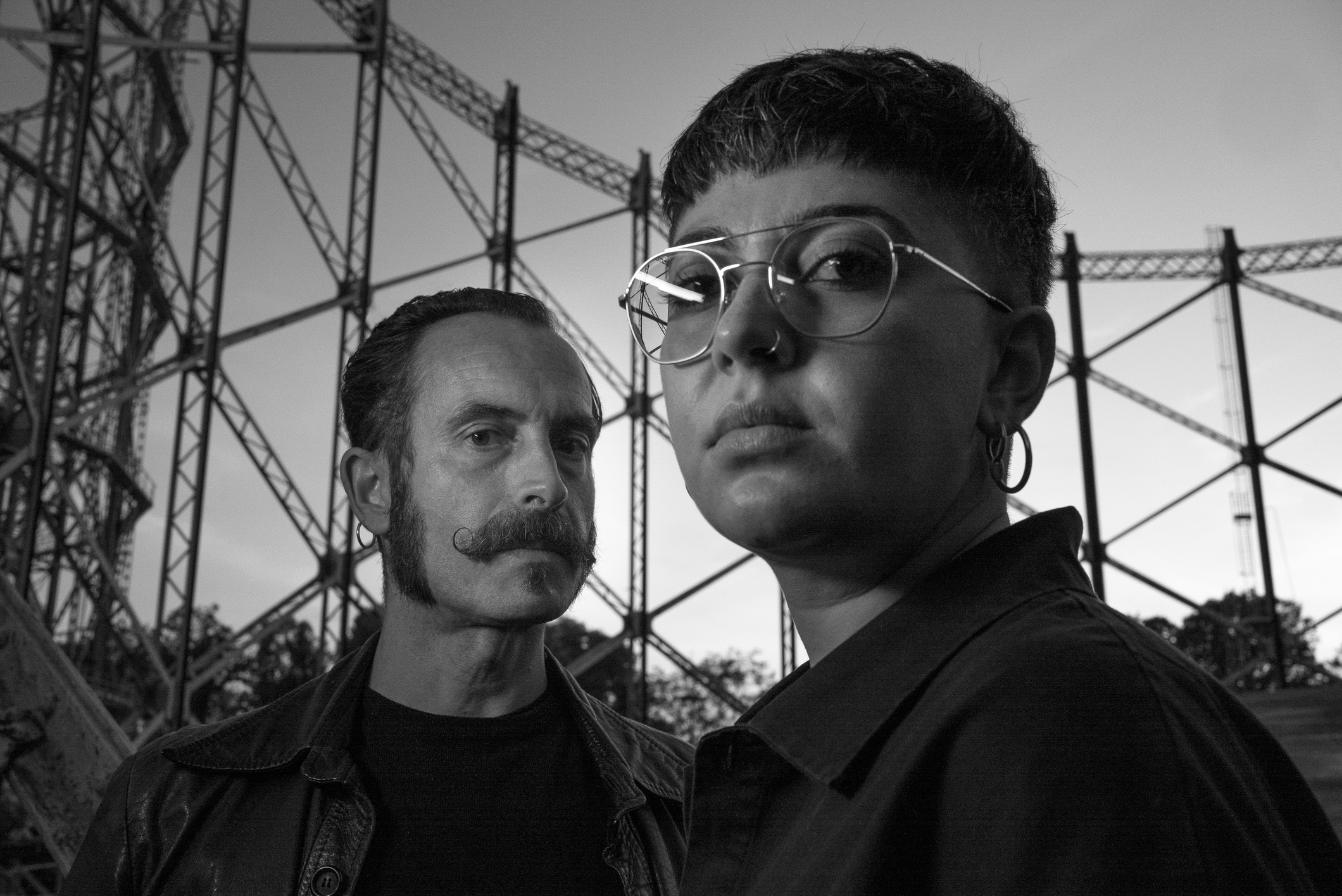
If you have found an error or typo in the article, please let us know by e-mail info@insounder.org.

